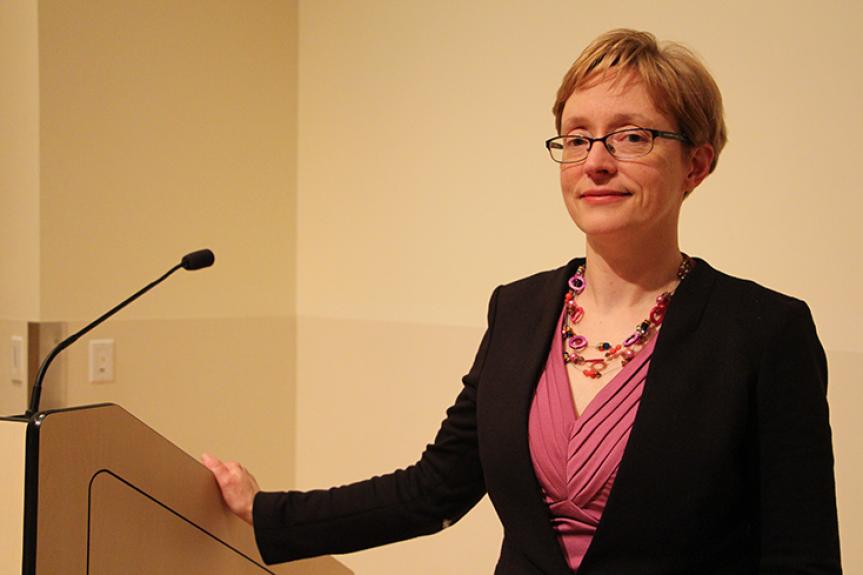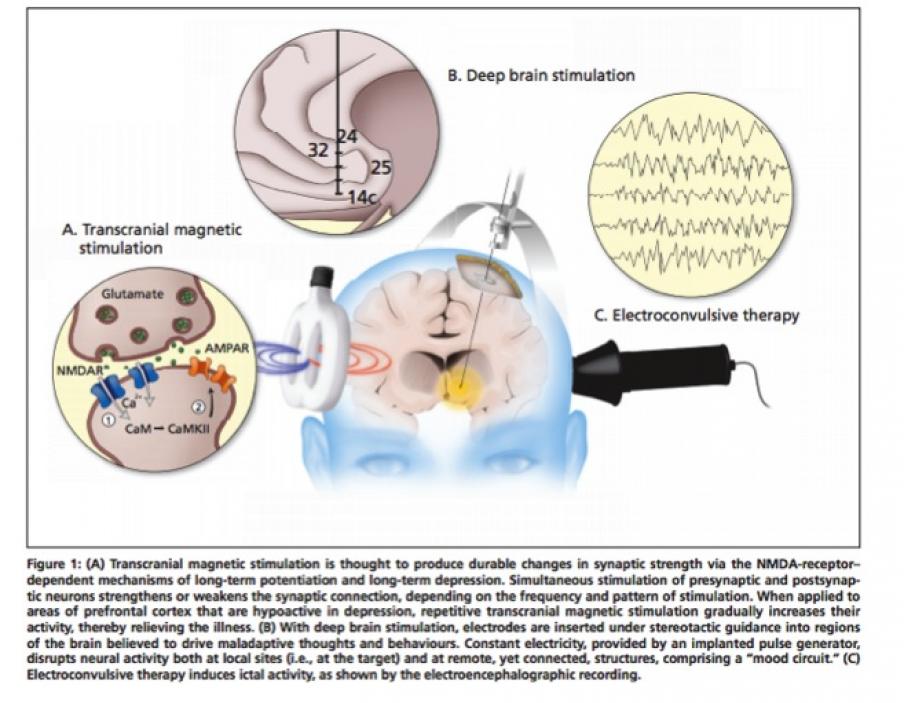
When one hears the words Electroconvulsive Therapy (ECT), images of Jack Nicholson in One Flew Over the Cuckoo’s Nest often jump to mind. This is the unfortunate stereotype that this therapy (formerly referred to as Shock Therapy) still has today for many people. While mental health treatments have come a long way, many tried and true methods are still used today but are vastly improved and have been adapted to modern technology and research. ECT is one such treatment. During ECT a small current is run through a person’s brain to stimulate brain cells.
This therapy is very different today than it was in the past. The Royal’s Dr. Lisa McMurray helped demystify ECT during her Conversations at The Royal lecture; she was joined by Domenica Palermo and Tanya McLendon, registered nurses at The Royal, as well as two clients who shared their experiences with ECT.
Dr. McMurray gave an overview of what ECT is, what it’s used for and what the procedure looks like today. ECT runs a small current through a person's brain to stimulate brain cells. The small current intentionally triggers a brief seizure, which causes changes in brain chemistry that can quickly reverse symptoms of certain mental illnesses. One of the major myths about ECT is that it damages brain cells however research shows it actually stimulates nerve cell growth. When ECT is performed, brain transmitters are released and more blood flow occurs in the brain, creating more balance.
Contrary to ECT’s beginnings, today all Electroconvulsive Therapies are performed with anaesthetic and muscle relaxers so the patient is comfortable. ECT can work well for major depressive episodes, manic episodes, schizoaffective disorder, treatment-resistant schizophrenia, and other medical conditions such as Parkinson’s when used in combination with medication and other types of therapies. ECT can also be helpful in treatment-resistant cases where conventional therapies and medications have little effect. ECT doesn’t work well, however, for dysthymic disorder, anxiety disorder, substance abuse, personality disorder or eating disorders.
ECT may be a good treatment option when medications aren't tolerated or other forms of therapy haven't worked. ECT is used for its rapid response, because it’s less risky than alternatives and has a history of good response and is a patient preference. Like with all treatments, there are risks and benefits associated with ECT. The most common side effect of ECT is memory loss (although some report memory improvement). Other side effects include confusion that can last from minutes to several hours and physical side effects such as nausea and vomiting. The Royal provides ECT as a treatment option for patients 16 years and older who fit the criteria. The ECT procedure takes about five to 10 minutes, with added time for preparation and recovery. ECT can be done while a patient is hospitalized or as an outpatient procedure.
In preparation for the procedure, the patient will have general anaesthesia, a brief physical exam to check their heart and lungs, an intravenous (IV) line will be inserted and an IV tube into the arm or hand through which medications or fluids can be given. The nurse will then place electrode pads on their head. Each pad is about the size of a dollar. ECT can be unilateral, in which electrical currents focus on only one side of the brain, or bilateral, in which both sides of the brain receive focused electrical currents.
Many people begin to notice an improvement in their symptoms after two or three treatments with electroconvulsive therapy. “It's rewarding to see our patients improve and get better on a daily basis while being treated with ECT,” said Domenica Palermo, registered nurse.
Past clients shared their experiences with ECT treatments at The Royal: "I credit ECT for saving my life three times." Another patient shared her experience: "Very professional, staff are so kind, it's nothing like the movies."
While ECT can be a very helpful therapy with great results, it’s certainly not a cure-all and works best when used in conjunction with medication and other forms of therapy such as Cognitive Behavioural Therapy.
View the slide deck or watch the full presentation:

